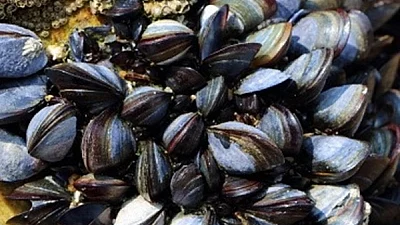Microplastics in blue mussels signal plastics in human food supplies
Australian researchers have found microplastics in variable concentrations in blue mussels and water within the intertidal zone at some of the country's most popular and more remote beaches

Australian researchers have found microplastics in variable concentrations in blue mussels and water within the intertidal zone at some of the country's most popular and more remote beaches.
This means microplastics are now finding their way into human food supplies - including wild-caught and ocean-farmed fish and seafood sourced from the once pristine Southern Ocean and gulf waters of South Australia, warned researchers at Flinders University in Australia.
Microplastics are any type of plastic that is less than 5 mm long. It has become the most crucial environmental and health issue, seen from the top of Mount Everest to the deepest oceans.
"Our findings shed light on the urgent need to prevent microplastic pollution by working with the communities, industries and government to protect these fragile marine systems," said Professor Karen Burke da Silva, from the varsity.
In the paper, published in Science of the Total Environment, the team sampled varying levels of microplastics on 10 popular beaches across South Australia, from Coffin Bay and Port Lincoln on the West Coast to Point Lowly and Whyalla on the Spencer Gulf, to popular Adelaide metropolitan beaches along with Victor Harbor, Robe and Kangaroo Island.
Low to medium levels of microplastics measured in the common blue mussel (Mytilus spp.) - a filter feeder affected by ecosystem conditions - were measured to analyse the main kinds of pollution affecting the environment, and single-use plastic was the main offender.
Microplastics are ubiquitous in the marine environment and tend to be more abundant in mussel samples near large towns and cities, the team found.
"By investigating microplastic load in the mussel, we call attention to the implications of microplastic pollution on South Australia's unique marine ecosystems and on the local human food chain," said Janet Klein, the first author of the article.
Trillions of microplastic particles exist in the world's oceans, with the highest concentrations recently found in the shallow sea floor sediment off Naifaru in the Maldives (at 278 particles kg ) and lowest reported in the surface waters of the Antarctic Southern Ocean.
Microplastic concentration in the South Australian intertidal water was found to be low to moderate relative to global levels and microplastic abundance in mussels - within the range also reported globally, the team noted.
Recently, scientists at the University of Hull and Hull York Medical School in the UK for the first time discovered microplastics in live human lungs, a finding that indicates we are inhaling the dangerous substances without knowledge that can have a major impact on our respiratory health.
Microplastics have also been detected in cosmetic products and in human bloodstream in detectable levels.
Follow us on: Facebook, Twitter, Google News, Instagram
Join our official telegram channel (@nationalherald) and stay updated with the latest headlines